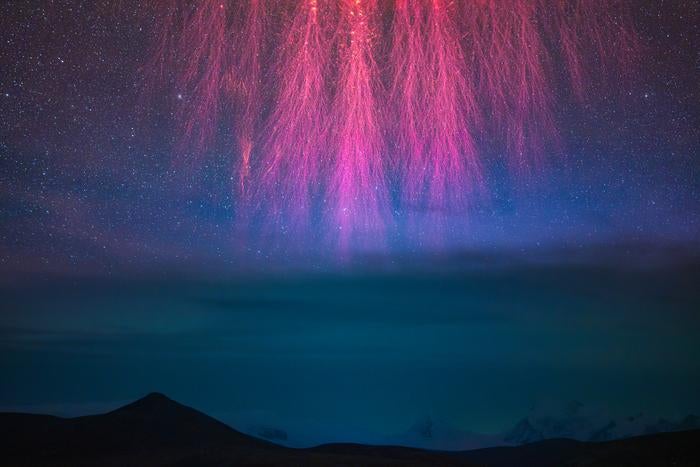A strange “red lightning” phenomenon photographed from near a lake site in the southern Tibetan plateau in 2022 was driven by thunderstorms over the Himalayan region, scientists discover in a new study.
Thunderstorms can generate different types of transient luminous events like gigantic jets and blue jets via the transfer of charges involved in lightning formation from inside clouds to the ground.
On the night of 19 May 2022, two astrophotographers located near Pumoyongcuo Lake in Tibet captured the spectacular display of “red sprites” – an atmospheric phenomenon named after their jellyfish-like appearance.
These were electrical discharges that produced vivid red flashes high above thunderstorms.

In this particular event in 2022, researchers also spotted 16 rare secondary jets and the first-ever recorded case in Asia of green airglow at the base of the ionosphere – a layer of the atmosphere containing a high concentration of ions about 80 to 1,000km (50 to 620miles) above the earth’s surface.
“Nearly half of these events involved dancing sprites, with an additional 16 uncommon secondary jets and at least four extremely rare green emissions called ‘ghosts’ observed following the associated sprites,” scientists wrote in a new study.
The findings, published in the journal Advances in Atmospheric Sciences, revealed the driving forcebehind this grand red sprites display.
“This event was truly remarkable,” says study co-author Gaopeng Lu from the Chinese Academy of Sciences.
In the latest research, scientists assessed photographs of the event to probe the parent lightning discharges.
Due to the lack of precise timestamps to analyse photos and videos of the event, researchers developed an innovative method to synchronise video time using satellite trajectories and star field analysis.
Using this approach, they could determine the exact occurrence times of the sprites, and link them to their parent lightning discharges.
Based on the analysis, scientists found that the sprites were triggered by a “high-peak current” positive cloud-to-ground lightning strikes within a massive convective system spanning a cloud area of over 200,000sqkm.
The parent lightning discharges which drove the red sprites arose from a convective complex stretching from the Ganges Plain to the southern foothills of the Tibetan Plateau, researchers noted.
“This suggests that thunderstorms in the Himalayan region have the potential to produce some of the most complex and intense upper-atmospheric electrical discharges on Earth,” Dr Lu said.
The findings, according to researchers, hint that storms in the region may generate even more complex discharge structures like the red sprites.
Source: independent.co.uk


